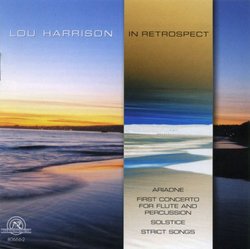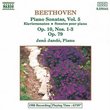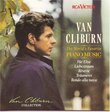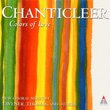| All Artists: L. Miller; flute; W. Winanat; percussion; H. Sloan; percussion; L. Kromm; baritone; Y. Powers; oboe; A. Gordon; trumpet; N. Fernandez; celesta; E. Wong George; tack piano; S. Tramontozzi; string bass; P. Shelton; cello; L. Duckles; cello Title: Lou Harrison: In Retrospect Members Wishing: 2 Total Copies: 0 Label: New World Records Original Release Date: 1/1/2007 Re-Release Date: 4/1/2007 Genres: Pop, Classical Styles: Vocal Pop, Ballets & Dances, Ballets, Chamber Music, Forms & Genres, Concertos, Historical Periods, Classical (c.1770-1830), Modern, 20th, & 21st Century, Instruments, Reeds & Winds Number of Discs: 1 SwapaCD Credits: 1 UPC: 093228066620 |
Search - L. Miller; flute; W. Winanat; percussion; H. Sloan; percussion; L. Kromm; baritone; Y. Powers; oboe; A. Gordon; trumpet; N. Fernandez; celesta; E. Wong George; tack piano; S. Tramontozzi; string bass; P. Shelton; cello; L. Duckles; cello :: Lou Harrison: In Retrospect
 | L. Miller; flute; W. Winanat; percussion; H. Sloan; percussion; L. Kromm; baritone; Y. Powers; oboe; A. Gordon; trumpet; N. Fernandez; celesta; E. Wong George; tack piano; S. Tramontozzi; string bass; P. Shelton; cello; L. Duckles; cello Lou Harrison: In Retrospect Genres: Pop, Classical
Although the compositional style of Lou Harrison (1917-2003) evolved and matured during his long and productive life, he held fast to a number of basic aesthetic principles: a devotion to beautiful melody; the foregroundin... more » |
Larger Image |
CD Details
Synopsis
Product Description
Although the compositional style of Lou Harrison (1917-2003) evolved and matured during his long and productive life, he held fast to a number of basic aesthetic principles: a devotion to beautiful melody; the foregrounding of rhythm, melody and ocunterpoint over harmony; a preference for just-intonation tuning systems; and the integration of influences from diverse world musics. On the present disc, which includes workds from 1939-1987, all of the characteristics are in evidence. Despite its early origin, First Concerto for Flute and Percussin (1939) has remained one of Harrison's most frequently performed and recorded works. The ballet Solstice (1950) is written for octet: three treble instruments (flute, oboe, trumpet), three bass instruments (two cellos and string bass), and two keyboards (celesta and tack-piano). Harrison found that by compining the tack-piano with the celesta he could create a sound that resembled that of an Indonesian gamelan, which he first encountered in 1939. The complex rhythms and exuberant melodies of gamelan became a major source of inspiration. The gamelanish sounds in Solstice can be heard most prominently in the fourth movement ("Earth's Invitation"), when the solo flute line is accompanied by celesta, tack-piano, and pitched percussion created by the bass player, who strikes the strings of his instrument with drum sticks below the bridge. The text for Strict Songs (1955, revised 1992), modeled on Navajo ritual song, is of Harrison's own invention. Harrison's interest in gamelan had led him to explore the possibilities of pentatonic modes. Each of the four movements of Strict Songs is based on a different pentatonic mode. All intervals are tuned to exact mathematical proportions, rather than to the impure compromise-intervals of present-day equal-temperament. The fixed-pitch instruments in the ensemble (piano and harp) are retuned to produce non-beating intervals; the stirngs and trombones match these pitches by ear. The effect of
Similar CDs
| Candy Kusottare Genre: International Music Label: 3d | |
| Player Inc. Player Inc. Genres: Pop, Rap & Hip-Hop, R&B Label: Joey Boy Records | |
Similarly Requested CDs
| Ludwig van Beethoven, Van Cliburn Beethoven Sonatas Genre: Classical Label: RCA | |
| Kennedy, Harrell, Ravel Dous for Violin & Cello Genre: Classical Label: EMI Classics | |
| Donovan Golden Hits Genres: Folk, International Music, Pop, Rock, Classic Rock Label: Masters Intercontine | |

 Track Listings (18) - Disc #1
Track Listings (18) - Disc #1








